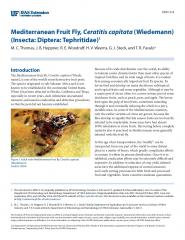Found in Central America, Malpighia glabra or commonly known as Escobillo is a tropical, evergreen, small fruit tree or shrub growing up to 3 m tall. It has spreading and drooping branches on its short bole. Established plants are tolerant to drought. The leaves are glossy, dark green, oval to sword-shaped, and can be wavy along the edge. The flowers are pinkish red. The bright red, ovoid fruits are eaten raw, cooked, or made into juices, sauces, jams, wines, or purees. It has a sweet flavor. It also has medicinal uses. In particular, it is used for the treatment of coughs and colds, diarrhea, dysentery, and liver problems. The bark yields a gum that is recommended as a pectoral;it is also a source of tannins. The wood is hard and heavy, and used for making small utensils.
Malpighia glabra is an evergreen Shrub growing to 6 m by 6 m at a medium rate.
It is hardy to zone 10 and is frost tender. The flowers are pollinated by Bees. The plant is not self-fertile.
It is noted for attracting wildlife.
Suitable for: light , medium and heavy soils and prefers well-drained soil. Suitable pH: acid and neutral soils and can grow in very acid and saline soils.
It can grow in semi-shade or no shade. It prefers moist soil and can tolerate drought. The plant can tolerates strong winds but not maritime exposure.
A plant of the subtropics to hot, tropical, lowland areas with medium to high rainfall. It can be found at elevations up to 1,700 metres, but does best below 800 metres. It grows best in areas where annual daytime temperatures are within the range 24 - 30°c, but can tolerate 5 - 34°c. When dormant, the plant can survive temperatures down to about -2°c, but young growth can be severely damaged at -1°c. It prefers a mean annual rainfall in the range 1,300 - 2,000mm, but tolerates 700 - 2,400mm. Tolerates seasonally dry periods. Easily grown in a good soil and a sunny position. Prefers a rich, deep and well drained soil but is able to tolerate a variety of soil conditions. Sandy soils carry an increasing risk of nematode infection. Prefers a pH in the range 5.5 - 7.5, tolerating 5 - 8. Requires a pH in excess of 5.5. Established plants are drought tolerant. Plants are fairly tolerant of salt-laden winds. Seedlings can fruit when only 2 - 3 years old, but are not always of as good quality as their parents. Trees start to produce well 3 - 4 years after planting and continue for 15 years. Plants can produce several flushes of flowers each year. The flowers are very attractive to bees. Plants can produce 2 - 3 crops of fruit a year. Individual trees can produce 15 - 30 kilos of fruit each year. Yields of 6.7 - 105 tonnes per hectare have been recorded. Plants usually require cross-pollination to ensure a good fruit set, though there are some reports of self-fertilization. Flowering Time: Mid Spring Late Spring/Early Summer. Bloom Color: Rose/Mauve. Spacing: 15-20 ft. .
HabitatsRocky limestoneHabitatsfrom sea level to 1
Habitats000 metres. Thrives at elevations between sea level and 800 metres
Habitatsbut it can be found at elevations up to 1
Habitats700 metres.
Resources
IN37100
EENY-214
EDIS - Electronic Data Information Source - UF/IFAS Extension
Mediterranean Fruit Fly, Ceratitis capitata (Wiedemann)
(Insecta: Diptera: Tephritidae) 1IN37100

EENY-214
Mediterranean Fruit Fly, Ceratitis capitata (Wiedemann)
(Insecta: Diptera: Tephritidae) 1https://edis.ifas.ufl.edu/pdffiles/IN/IN37100.pdfIN37100
Minor pests
- Anastrepha obliqua
Anastrepha striata
Anastrepha suspensa
Aphis craccivora
Armillaria tabescens
Bactrocera carambolae
Bactrocera correcta
Brevipalpus phoenicis
Ceratitis capitata
Eutetranychus banksi
Ferrisia virgata
Icerya purchasi
Insignorthezia insignis
Meloidogyne incognita
Orgyia postica
Rotylenchulus reniformis
Spodoptera frugiperda
Xiphinema basiri
